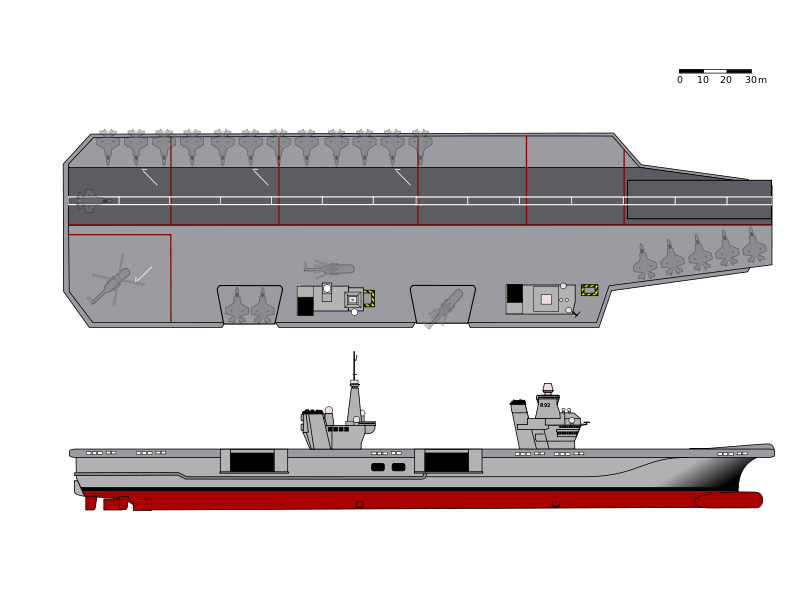It’s from the Daily Mail, so a certain level of de-hystericization is called for…along with salt to taste. First, the discovery that the two carriers will initially be without radar for early warning of incoming planes and missiles:
The Royal Navy’s new aircraft carriers could set sail without a crucial radar which warns commanders of incoming enemy warplanes and missiles.
A damning report by MPs reveals the Crowsnest early warning system will not be ready until six years after the first of the £5.5billion Queen Elizabeth-class warships enters service in 2016.
Delays in fitting the ‘eyes in the sky’ system to military helicopters until 2022 were a ‘concern’, the Commons’ Public Accounts Committee (PAC) says today.
And the costs incurred by changing the planned acquisition of F-35 aircraft to equip the carriers is rather eye-watering:
The bill for the two new warships, given the green light in 2008, is almost twice the original £3.6billion — and there are ‘huge risks’ it will increase further, says the report.
MPs heap criticism on the Coalition for wasting money after a U-turn over the type of warplanes to fly from the aircraft carriers.
In 2010 ministers controversially decided to scrap the last Labour government’s plans to buy a fleet of jump jets, which take off and land vertically.
Instead, Prime Minister David Cameron ordered conventional versions of the US-built F-35 Joint Strike Fighter that would need catapults and arrester gear to take off from and land on the vessels.
But this was based on ‘deeply flawed information’, say the committee. When the cost of fitting the ships with ‘cats and traps’ more than doubled to £2billion, Mr Cameron flip-flopped and returned to buying the jump jet.
The move cost a staggering £74million in squandered in lost man hours, administrative costs and needless planning.
Labour MP Margaret Hodge, the PAC’s chairman, said: ‘The Committee is still not convinced that the MOD has this programme under control. It remains subject to huge technical and commercial risks, with the potential for further uncontrolled growth in costs.’
The switch back to the jump jet was made last year. Back in 2010, I was rather pessimistic that the carriers would even be built and I suggested that India would likely take them off the Royal Navy’s hands once they were complete.




